Having the correct screen brightness is very important. If you are working a lot in front of your computer, an incorrect screen brightness level can cause eye strain and drain the device battery if it's not running on an AC power source. Changing the brightness is also important if you are changing your environment from a room in your office to outdoors on a sunny day. There are a number of ways to change the screen brightness in Windows 10. Let's review them.
Advertisеment
Note: While most portable devices like laptops or tablets support changing the brightness of the screen out of the box, most Desktop PCs come without this ability because the display hardware has its own brightness control. For the method described below to work, you need to have a display with the appropriate hardware support. Also, you may need to update your display drivers. For example, the software brightness settings which directly alter the display's backlight may not work if you have an old CRT monitor.
Change Screen Brightness in Windows 10 in Settings
Settings is a modern Control Panel replacement available in Windows 10. It comes with a number of display settings including brightness.
To change the screen brightness in Windows 10, do the following.
- Open Settings.
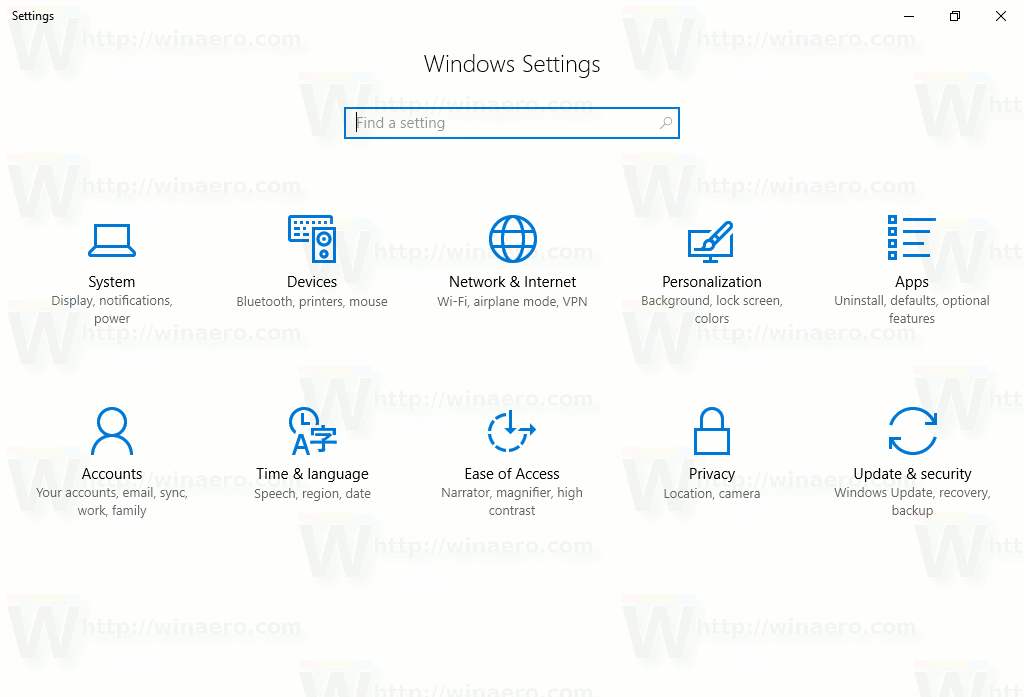
- Go to System - Display.
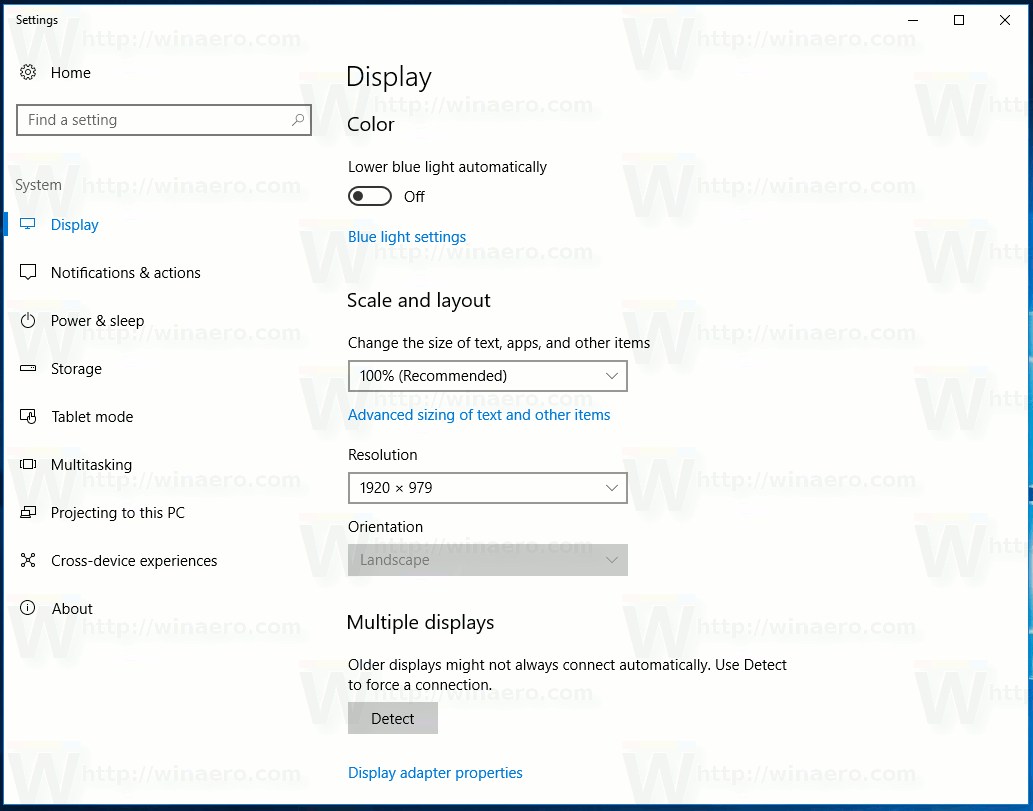
- There, adjust the Change brightness slider's position to set the desired screen brightness level.
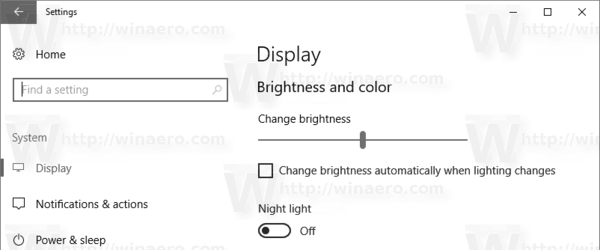
You are done.
Here are alternative ways to adjust screen brightness in Windows 10.
Change Screen Brightness in Windows 10 with Hotkeys
Some devices come with special keyboard hotkeys which allow the user to adjust display brightness with a combination of one or more keystrokes. For example, if you are using a laptop, it may come with an Fn key which along with a Function key (F1/F2) may be used to adjust the display brightness.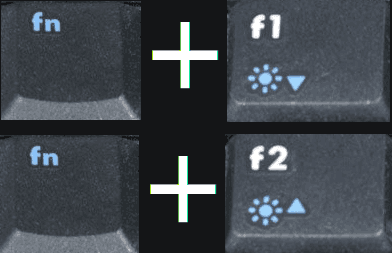
Change Screen Brightness in Windows 10 with Battery Flyout
On supported devices, you can use the Battery flyout to change the screen brightness.
- Click on the battery icon in the notification area of the taskbar to open the Battery flyout. It looks as follows.
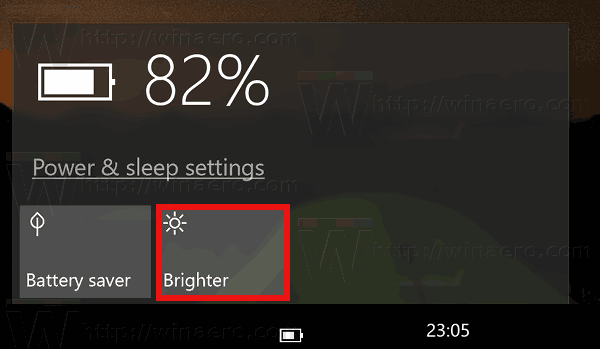
- There, you can see the brightness button. Click it to change the brightness level to the desired value.
Change Screen Brightness in Windows 10 using Action Center
The Action Center pane in Windows 10 comes with the same brightness button like the one in the Battery flyout. Here it how to access it.
- Click on the Action Center icon in the system tray.
- The Action Center pane will open. Look for the Brightness button in Quick Actions. If you cannot see it, click the Expand link to see more quick action buttons like Project, All settings, Connect, Night light, Location, Note, Quiet hours, Tablet Mode, VPN, and so on.
- Click the Brightness quick action button to toggle between various brightness levels.
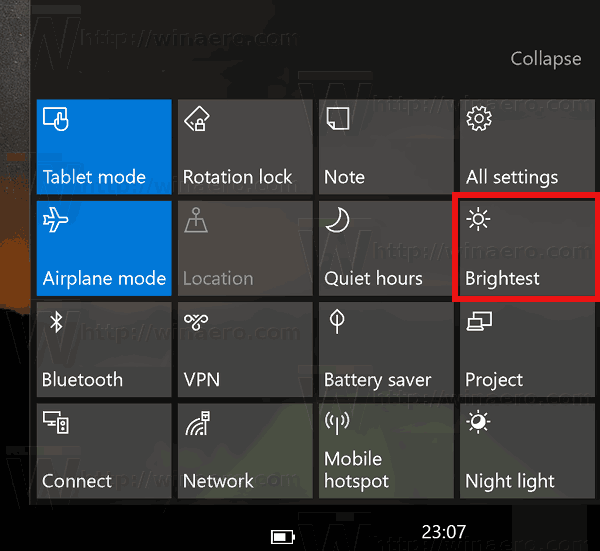
Change Screen Brightness in Power Options
- Open Control Panel.
- Go to Control Panel\Hardware and Sound\Power Options.
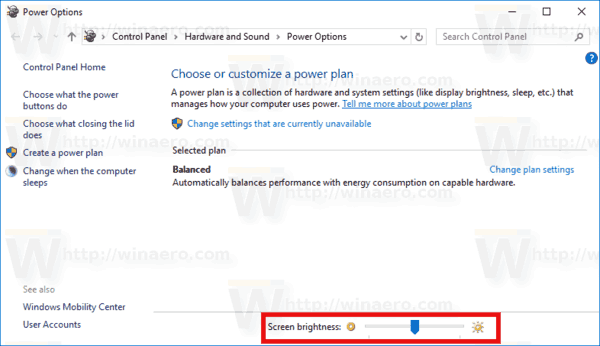
- In the bottom right, adjust the position of the Screen brightness slider and you are done.
- If you click on the Change plan settings link, you will be able to customize the brightness level for both On battery and Plugged in modes individually.
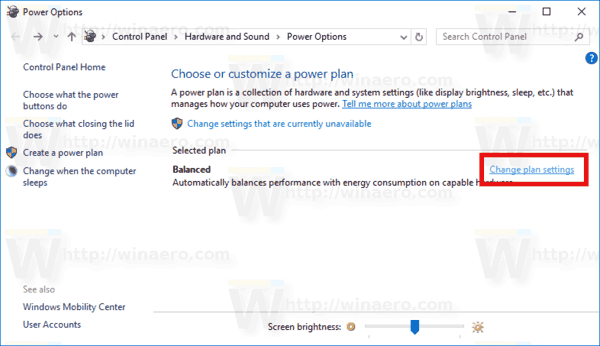 See the following screenshot:
See the following screenshot: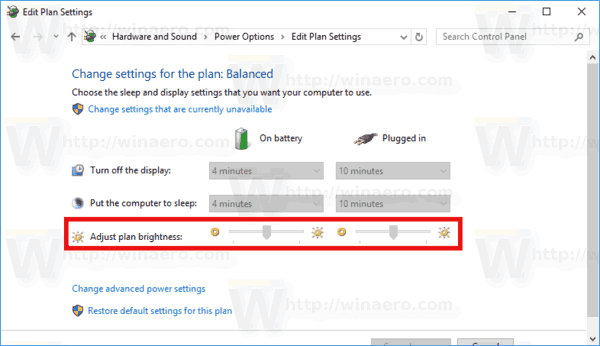
Also, you can open advanced settings of a power plan directly. In the Power Options dialog, set the desired brightness level for both On battery and Plugged in values in percentages.
Change Screen Brightness in PowerShell
You can use PowerShell to change the screen brightness level in Windows 10. Here is how.
- Open PowerShell.
- Type or copy-paste the following command:
(Get-WmiObject -Namespace root/WMI -Class WmiMonitorBrightnessMethods).WmiSetBrightness(1,DESIRED_BRIGHTNESS_LEVEL)
In the command above, replace the DESIRED_BRIGHTNESS_LEVEL portion with the percentage value from 0 to 100. For example, this command will set screen brightness to 50%:
(Get-WmiObject -Namespace root/WMI -Class WmiMonitorBrightnessMethods).WmiSetBrightness(1,50)
- Press the Enter key and you are done.
That's it.
Support us
Winaero greatly relies on your support. You can help the site keep bringing you interesting and useful content and software by using these options:

Why is the last method using powershell NOT working on a desktop?
because it can’t handle the external display
Hello
May you please write this command for changing dimmed screen brightness?
and also if may also a command for disabling adaptive brightness
Thank you
please brighton sceen
Hi,
Is there a way to change the screen brightness relative to current brightness level?
Something like the below command:
(Get-WmiObject -Namespace root/WMI -Class WmiMonitorBrightnessMethods).WmiSetBrightness(1,-15)
But of course this fails, as the parameter (-15) is not recognised. What I want is to reduce the brightness by 15%, and not set it to 15%.
if 100 means 100% and 0 means 0%
then reducing the brightness by 15% means 85
but dynamically reducing the brightness by 15% regardless of the current settings requires you to read the current setting and applying a bit of math to come up with a new number that is 15% less
sounds like too much work
if current brightness equals 50 then 42.5% will be the result of reducing 50 by 15%
First you need to get the current brightness, minus 15, and then set the brightness. Example code:
$Brightness = Get-Ciminstance -Namespace root/WMI -ClassName WmiMonitorBrightness | Select -ExpandProperty “CurrentBrightness”
$Brightness -= 15
if ($Brightness -lt 0) { $Brightness = 0 } elseif ($Brightness -gt 100) { $Brightness = 100 }
(Get-WmiObject -Namespace root/WMI -Class WmiMonitorBrightnessMethods).WmiSetBrightness(1, $Brightness)
Write-Host “Brightness: $Brightness”